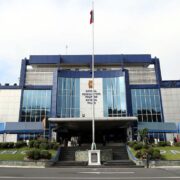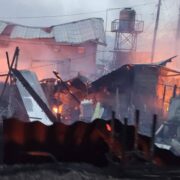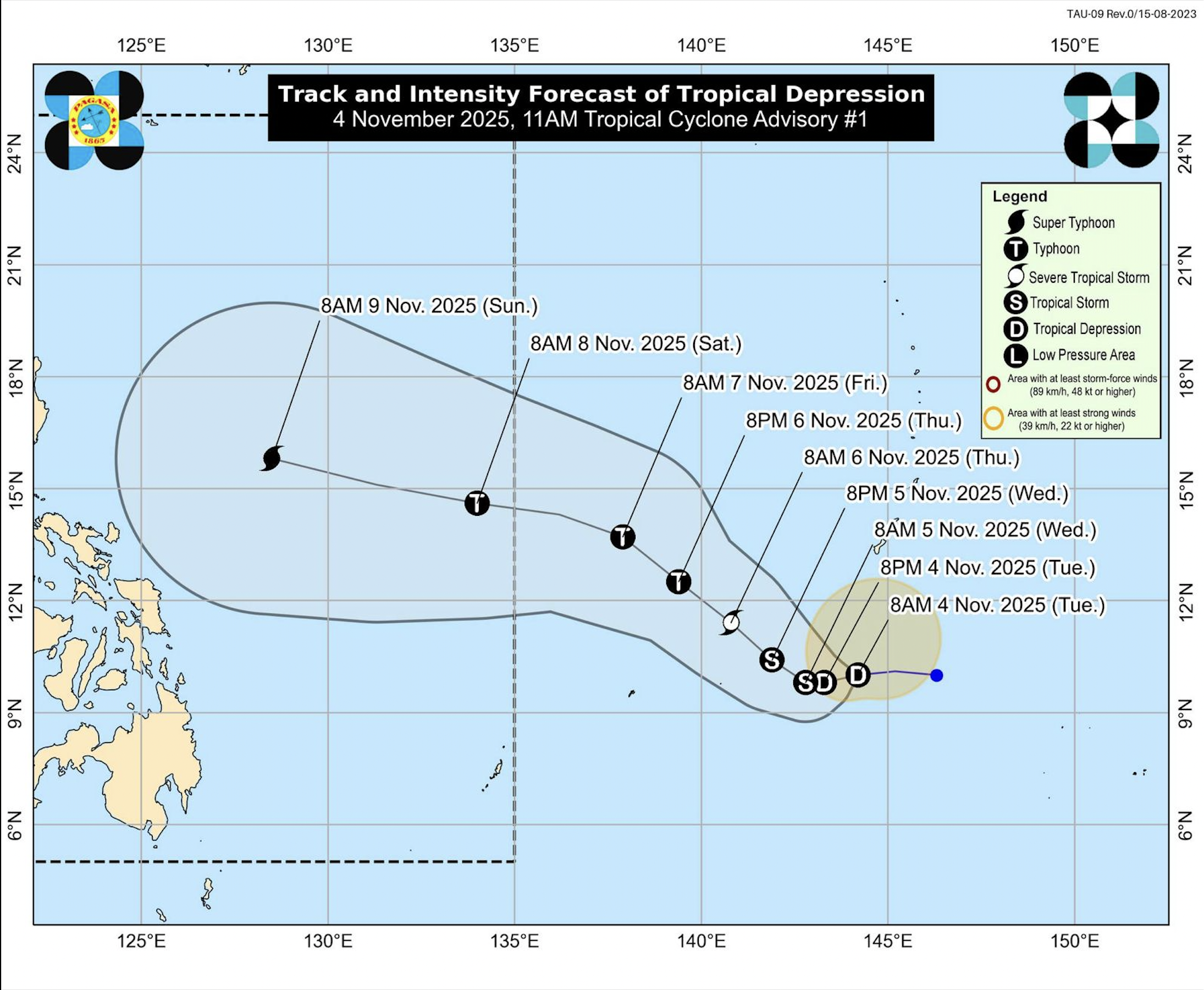‘Tino’ floods leave cars in piles, trap families on rooftops
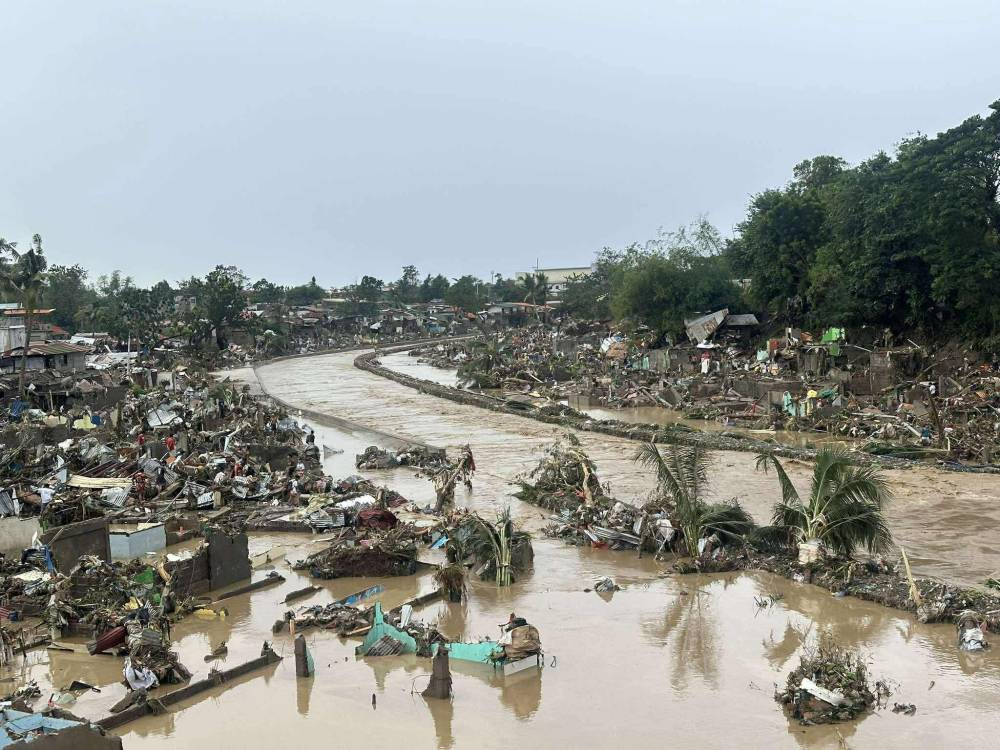
Typhoon “Tino” (international name: Kalmaegi) tore through central and southern Philippines on Tuesday, leaving a trail of devastation in many areas, killing at least five people and displacing tens of thousands.
It unleashed flash floods with a force and suddenness that caught many unprepared especially in urban areas. Images shared on social media showed residents trapped on rooftops, vehicles floating or piled on top of the other, and subdivisions going underwater in Cebu province.
Apart from the Visayas, which bore the brunt of the typhoon, Tino also lashed Dinagat Islands and Surigao del Norte in Mindanao, among other areas.
Tino, which had top sustained winds of 140 kilometers per hour (kph), unleashed more than 200 millimeters of rain, forceful winds and storm surges of up to 3 meters (10 feet) after slamming into Silago, Southern Leyte, around midnight on Monday.
“We have received so many calls from people asking us to rescue them from roofs and from their houses, but it’s impossible,” Gwendolyn Pang, secretary general of the Philippine Red Cross, said. “There are so many debris, you see cars floating so we have to wait for the flood to subside.”
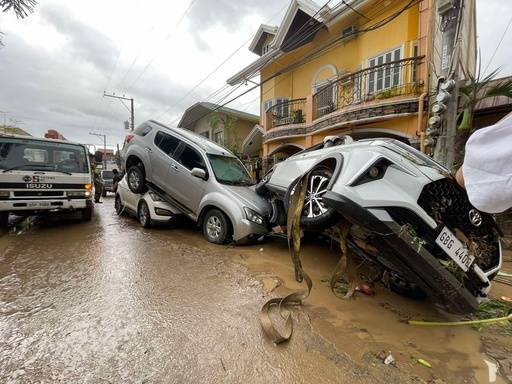
Pang said an unspecified number of residents were trapped on their roofs by floodwaters in the coastal town of Liloan in central Cebu province.
Cebu Gov. Pamela Baricuatro described the situation as “tragic,” noting that Tino struck just over a month after a magnitude 6.9 earthquake killed 79 residents in Bogo City.
One person died in the flood in Mandaue City, the governor said, while thousands of families took shelter in evacuation centers or climbed into rooftops in Liloan, Consolacion, Mandaue, Talisay, Danao, and Compostela.
Floodwaters displaced a total of 102,385 individuals in 46 barangays. Power outages hit several towns, complicating rescue operations.
In Barangay Bacayan, Cebu City, water rose to the second floor of homes in Villa del Rio 1 subdivision, forcing residents onto rooftops.
Nearby areas, including Barangay Buot-Taup and UN Avenue in Mandaue City, were also submerged, making roads impassable.
Northern Cebu saw flooding in Galaxy Danglag, Consolacion, and in front of the Danao Provincial Hospital. In southern Cebu, homes in Pueblo San Ricardo Subdivision, Talisay City, were partially underwater.
Mactan, an island in Cebu that is divided into Lapu-Lapu City and the town of Cordova, recorded 183 mm of rain at the height of Tino’s onslaught, according to the weather bureau Philippine Atmospheric, Geophysical and Astronomical Services Administration (Pagasa).
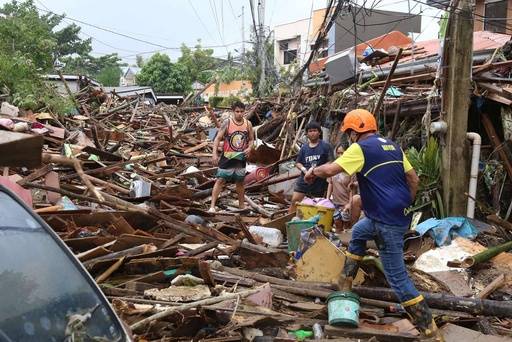
‘Strong wind’
In Southern Leyte, two fatalities were reported. In Saint Bernard, a senior citizen drowned as floods and landslides hit 30 barangays, forcing the evacuation of 12,477 residents.
Minor landslides blocked diversion roads, and bridges sustained damage, isolating several communities. Meanwhile, in MacArthur town, a 78-year-old widower from Barangay Romualdez was killed when a tree toppled onto his nipa hut.
Maasin City recorded 235.2 mm of rain from Monday to 8 a.m. on Tuesday, according to Pagasa.
In Eastern Samar, one of the east-central provinces first lashed by Tino early Tuesday, fierce wind either ripped off roofs or damaged about 300 mostly rural shanties on the island community of Homonhon, which is part of the town of Guiuan, but there were no reported deaths or injuries, Mayor Annaliza Gonzales Kwan said.
“There was no flooding at all, but just strong wind,” Kwan said. “We’re OK. We’ll make this through. We’ve been through a lot, and bigger than this.”
In November 2013, Supertyphoon “Yolanda” (Haiyan), one of the most powerful tropical cyclones on record, slammed ashore into Guiuan then raked across the central Philippines, leaving more than 7,300 people dead or missing, flattening entire villages and sweeping scores of ships inland.
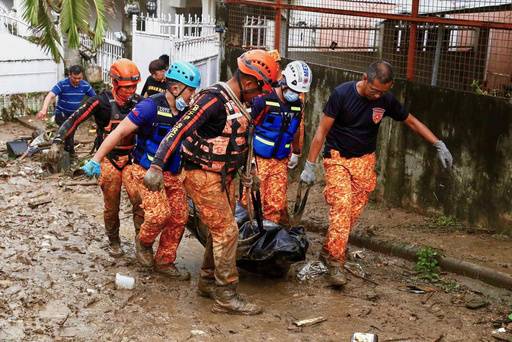
Higher death toll
In Bohol province, a 52-year-old barangay tanod (village watchman) from Barangay Danao, Panglao, died after being struck by a falling coconut tree while attempting to cut it down for safety.
The Inquirer counted at least five fatalities, although the Office of Civil Defense (OCD) said it was verifying reports that the death toll has climbed to 26.
Of the deaths, 22 were reported in Central Visayas, and two each in Negros Island Region and in Eastern Visayas, according to OCD spokesperson Junie Castillo.
“All of these are being verified and validated by the National Disaster Risk Reduction and Management Council (NDRRMC),” Castillo told reporters by phone. The NDRRMC reported one death earlier on Tuesday.
At least 43,000 families were evacuated in Bohol as heavy rains and strong winds lashed the island.
In Dinagat Islands, communities in the towns of Tubajon and Loreto, including Gibuson Island, were hit hard and isolated by landslides on a highway, according to Rep. Arlene “Kaka” Bag-ao.
“Families need essential materials to repair and rebuild their homes—especially roofing and other construction supplies,” she said in a statement. “At the same time, ensuring that they have enough to eat is crucial.”
The typhoon also cut off power in several towns in Surigao del Norte.
Signal No. 4 still up
Tino maintained its top sustained winds of 130 kph and gustiness of up to 180 kph as it headed toward Palawan, with Storm Signal No. 4 still raised over Calamian and Cuyo Islands; the central and southern portions of Antique; the central and southern portions of Iloilo, and Guimaras Island.
Lower storm signals were up over other parts of Luzon and Visayas, as the typhoon moved westward at 15 kph toward the West Philippine Sea. It was forecast to exit the Philippine area of responsibility by Thursday morning.
Meanwhile, Smart Communications and Globe assured their subscribers of the restoration of voice, messaging, and data connectivity that was disrupted by the typhoon.
Globe, which reported disruption in 16 provinces, including Cebu, Bohol and Negros Occidental in Visayas, and Dinagat Islands and Surigao del Norte in Mindanao, said it would initiate free calls and charging stations in limited connectivity areas. —With reports from Joey A. Gabieta, Leo Udtohan, Hazel P. Villa and Nestle Semilla-Dakay, Zacarian Sarao, John Eric Mendoza, Chris Panganiban, Joselle Badilla, Queenie Casio, Rey Perocho, Nami Padilla and AP












